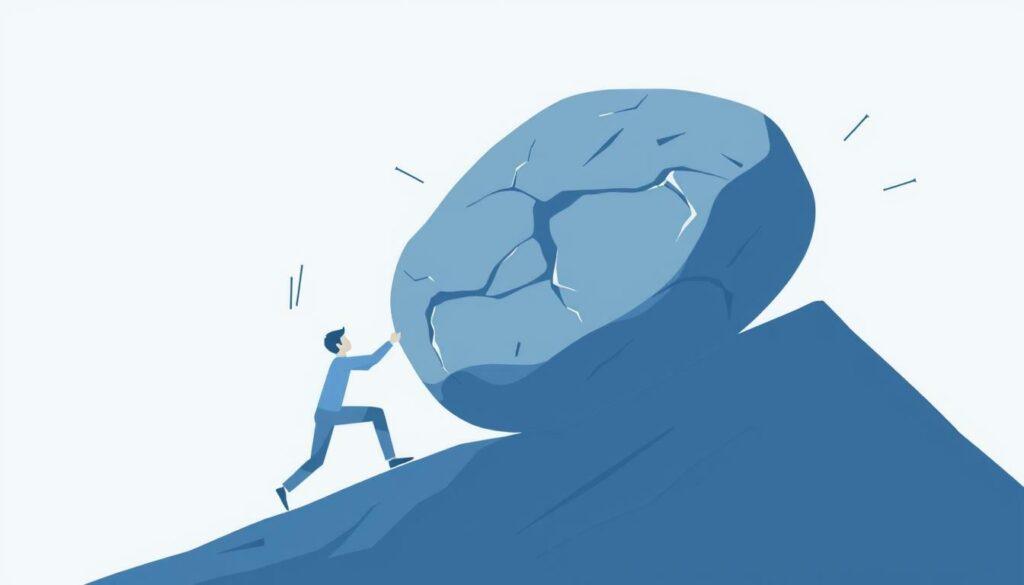The friction mental model shows why some actions are easy and others are hard. It’s about the obstacles that make things harder. For example, long checkout processes or messy workflows can stop us.
Knowing this model helps us see how to improve things. It’s useful for making better habits and designing better digital experiences. It helps us understand why some actions are hard and how to make them easier.
What Is the Friction Mental Model?
In physics, friction is the resistance that occurs when two surfaces move against each other. As a mental model, friction represents any force that makes an action harder than it should be—the resistance between your intention and execution.
This concept is a common problem that many people face when trying to implement new ideas or techniques within a group. For example, the friction experienced can diminish motivation and hinder progress.
The friction mental model operates on two simple principles:
1. More Friction = Less Action
When an activity requires significant effort, time, or mental energy, you’re less likely to do it. This explains why complex, multi-step processes often get abandoned midway.
2. Less Friction = More Action
When an activity is easy, convenient, and requires minimal effort, you’re more likely to follow through. This is why “one-click” solutions are so effective.
The power of this model lies in its versatility. You can apply it to understand why certain habits stick while others don’t, why some products succeed while others fail, and how to design systems that work with human nature rather than against it.
This idea of using mental models can enhance motivation and provide a technique for processing information in a more effective way.
How Friction Influences Decision-Making
Our brains are constantly seeking the path of least resistance. When faced with multiple options, we naturally gravitate toward the one that requires the least effort—even when we know a more difficult path might yield better results.
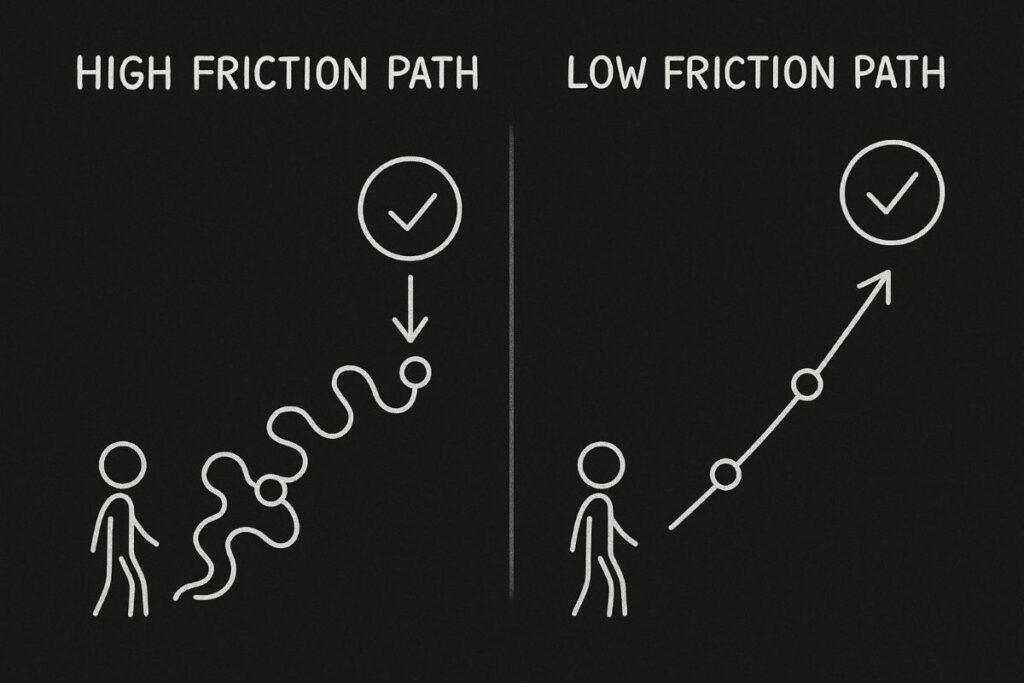
Consider these examples of how friction affects decision-making:
E-commerce Checkout
Amazon’s one-click ordering removes friction from the purchasing process. Studies show that each additional step in a checkout flow can reduce conversion rates by 10-30%.
Digital Adoption
Apps that require lengthy sign-up processes see 25% higher abandonment rates than those offering streamlined registration or social login options.
Habit Formation
People are 3x more likely to maintain exercise habits when their gym is on their daily commute route versus requiring a special trip.
Understanding friction helps explain why our behavior often contradicts our intentions in various aspects of life. We may genuinely want to save money, exercise regularly, or complete important projects, but if these activities involve high friction, our motivation must be proportionally higher to overcome the resistance.
Doing so can help us avoid procrastination and improve our outcomes by applying different models to our decision-making processes.
Friction and Motivation: A Behavioral Science Perspective
Behavioral science reveals that people often pick the easiest option, not the best one. This is called “effort aversion.” It’s linked to the friction mental model. When there’s a lot of friction, you need even more motivation to get past it.
A 2020 study in Psychological Bulletin found that small changes can make a big difference. For example, default options or fewer clicks can change how people behave.
This idea ties into concepts like choice architecture and cognitive load. Businesses that make things easier see more engagement and sales. People who simplify their surroundings are more likely to keep good habits.
In both cases, making things less effortful leads to more success. It’s all about reducing the effort needed to follow through.
Real-World Examples of the Friction Mental Model
Case Study 1: Uber’s Frictionless Experience
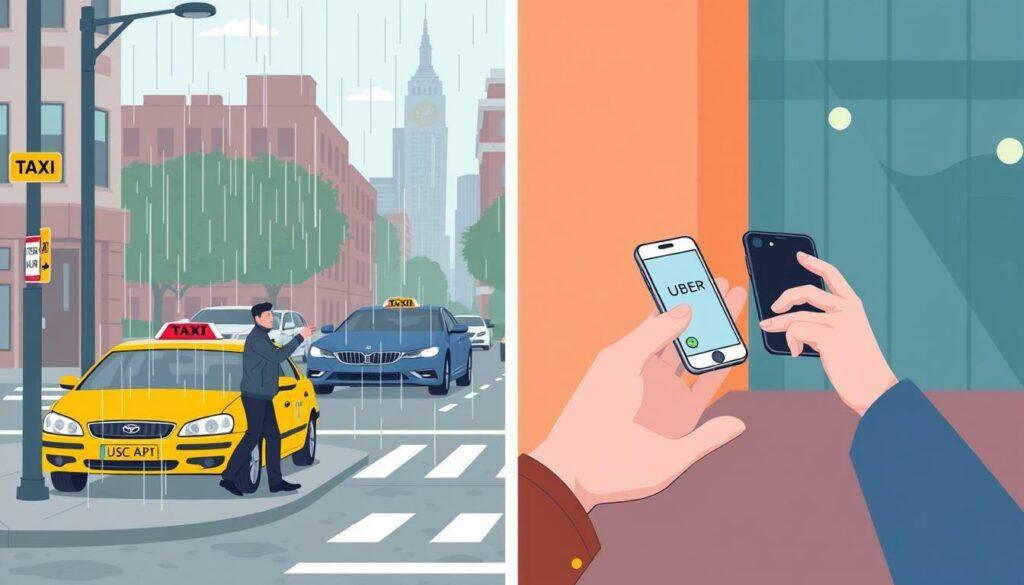
Before ride-sharing apps such as Uber, Didi, and Lyft, hailing a taxi involved multiple friction points: finding a taxi, explaining your destination, calculating appropriate tips, and handling payment. Uber systematically eliminated these friction points by:
- Allowing ride requests with a few taps on your phone
- Showing driver location and estimated arrival time
- Pre-setting your destination for the driver
- Handling payment automatically in the background
- Making tipping optional and digital
The result? A service that grew exponentially because it reduced friction at every step of the customer journey.
Case Study 2: Gym Membership Cancellations
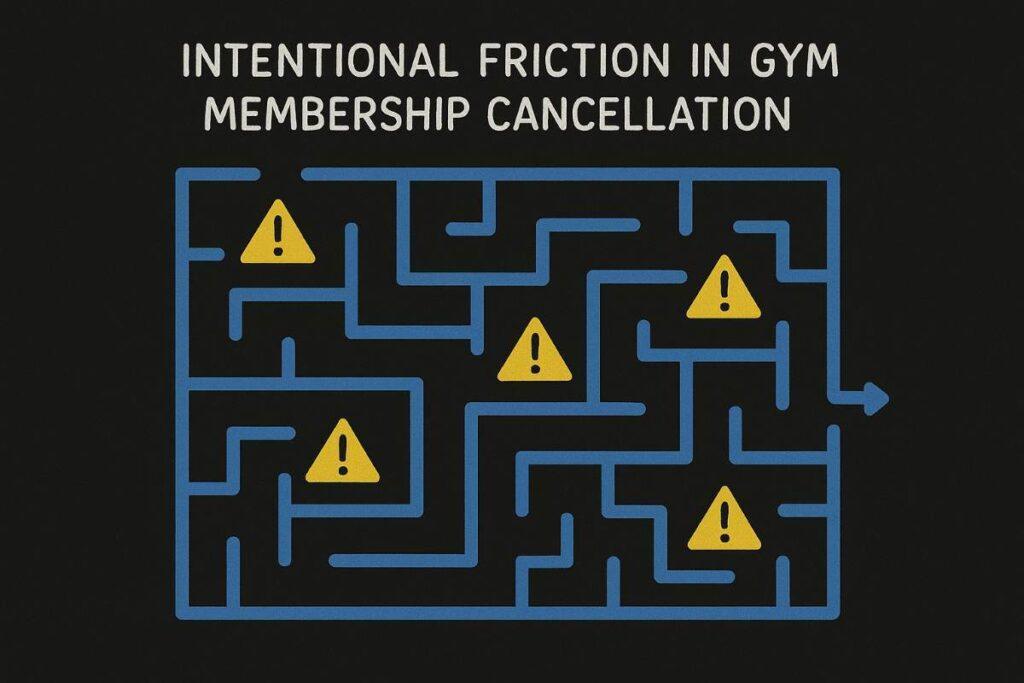
Many gyms intentionally add friction to their cancellation processes. Instead of allowing online cancellations, they might require:
- In-person visits during specific hours
- Certified mail submissions
- Multiple forms and signatures
- Lengthy exit interviews
- Cancellation fees or penalties
This strategic use of friction works because many members will continue paying rather than navigate the high-friction cancellation process.
While effective for retention, this approach often damages customer relationships and brand reputation, AND leads to negative outcomes in their life and encouraging procrastination on cancellation ideas.
Case Study 3: Toyota’s Production System
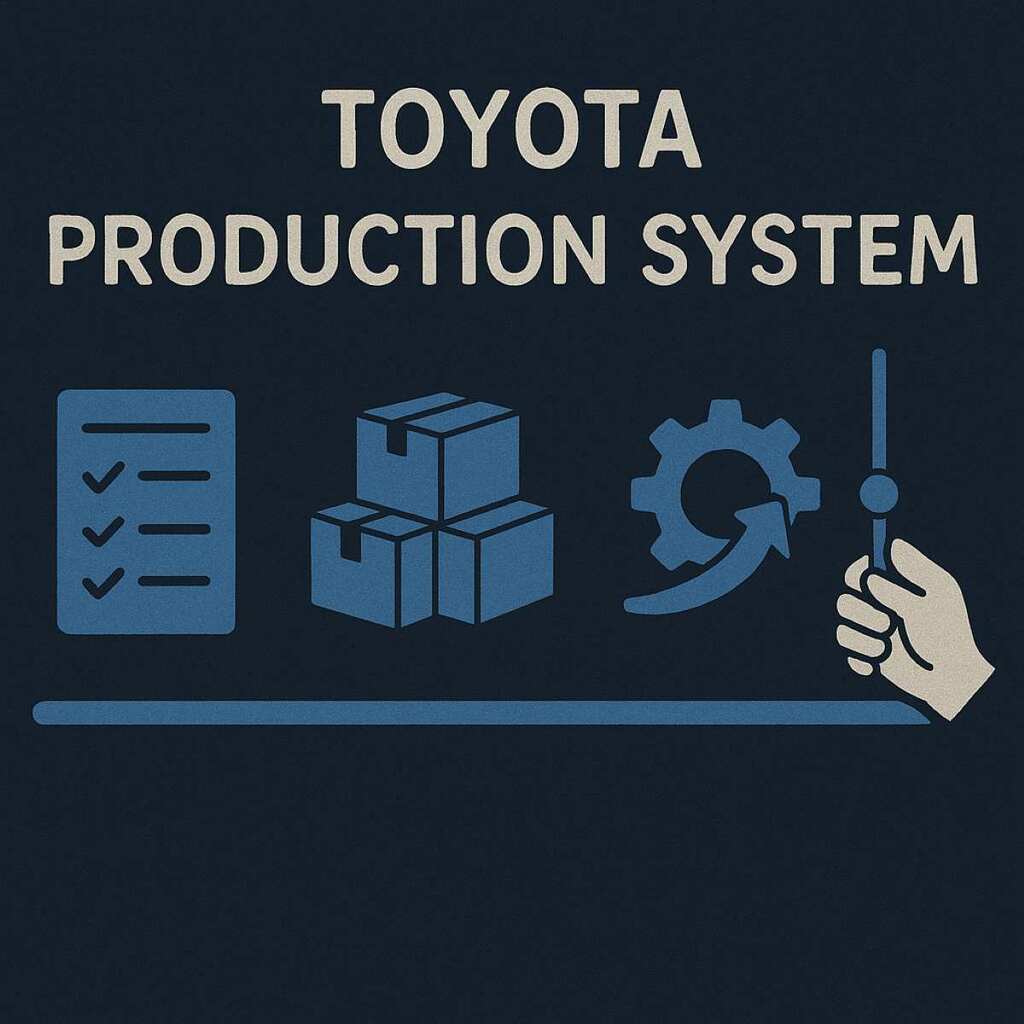
Toyota’s renowned Production System (TPS) is a masterclass in friction reduction. By implementing principles like:
- Standardization of processes to eliminate guesswork
- Just-in-time inventory to reduce delays and waste
- Continuous improvement (Kaizen) to identify and remove friction points
- “Pull-the-cord” system allowing any worker to halt production when problems arise
Toyota created a manufacturing environment where friction is continuously identified and eliminated. This approach has made Toyota one of the most efficient and quality-focused manufacturers in the world.
Practical Applications of the Friction Mental Model
The friction mental model provides a powerful framework for improving both personal habits and business systems. Here’s how to apply it effectively:
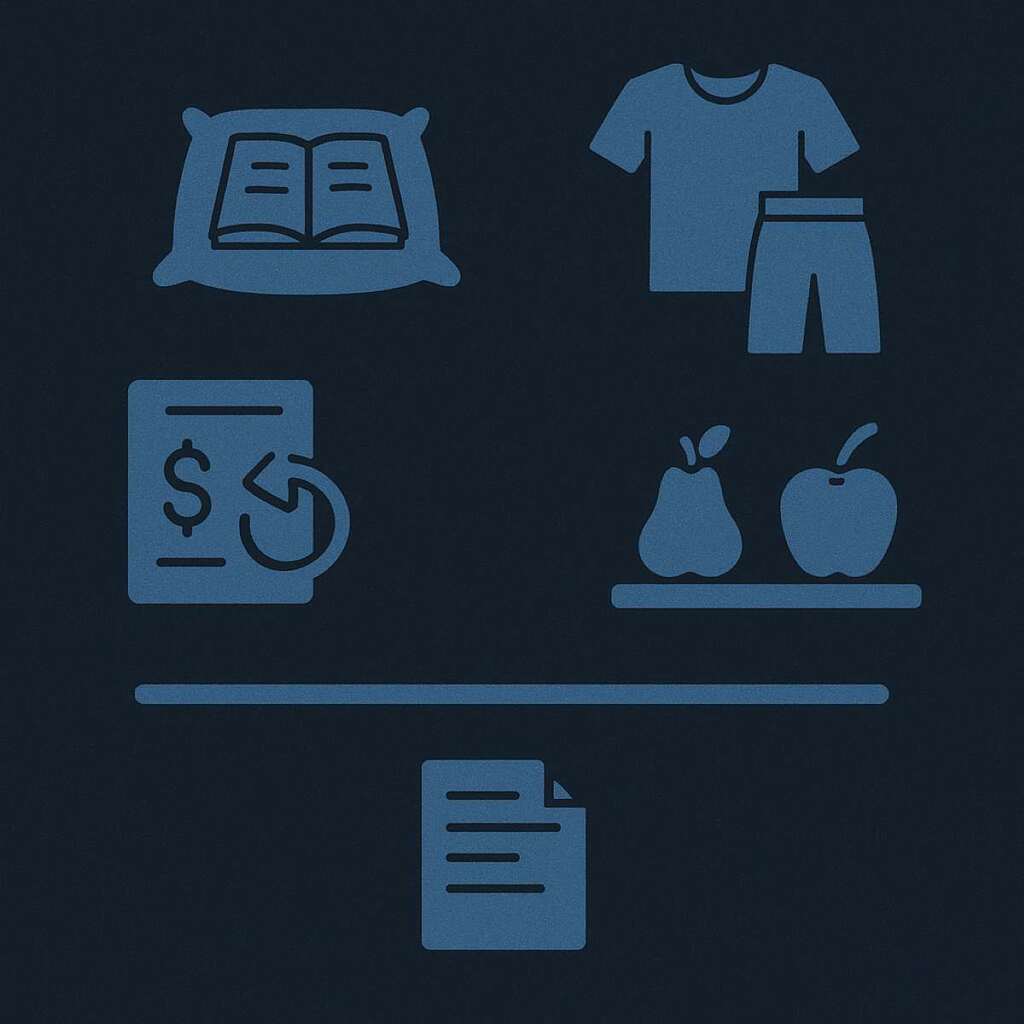
For Personal Habits
Reduce Friction for Desired Behaviors
- Place a book on your pillow to encourage reading before bed
- Prepare workout clothes the night before for morning exercise
- Use auto-payments for savings to make financial discipline effortless
- Keep healthy snacks at eye level in your refrigerator
- Create templates for recurring tasks to reduce startup time
Add Friction for Unwanted Behaviors
- Remove social media apps from your phone (require browser login)
- Keep unhealthy foods out of your home entirely
- Use website blockers during productive hours
- Set a 24-hour waiting period for non-essential purchases
- Place your TV remote in a drawer to discourage mindless viewing
For Business Systems
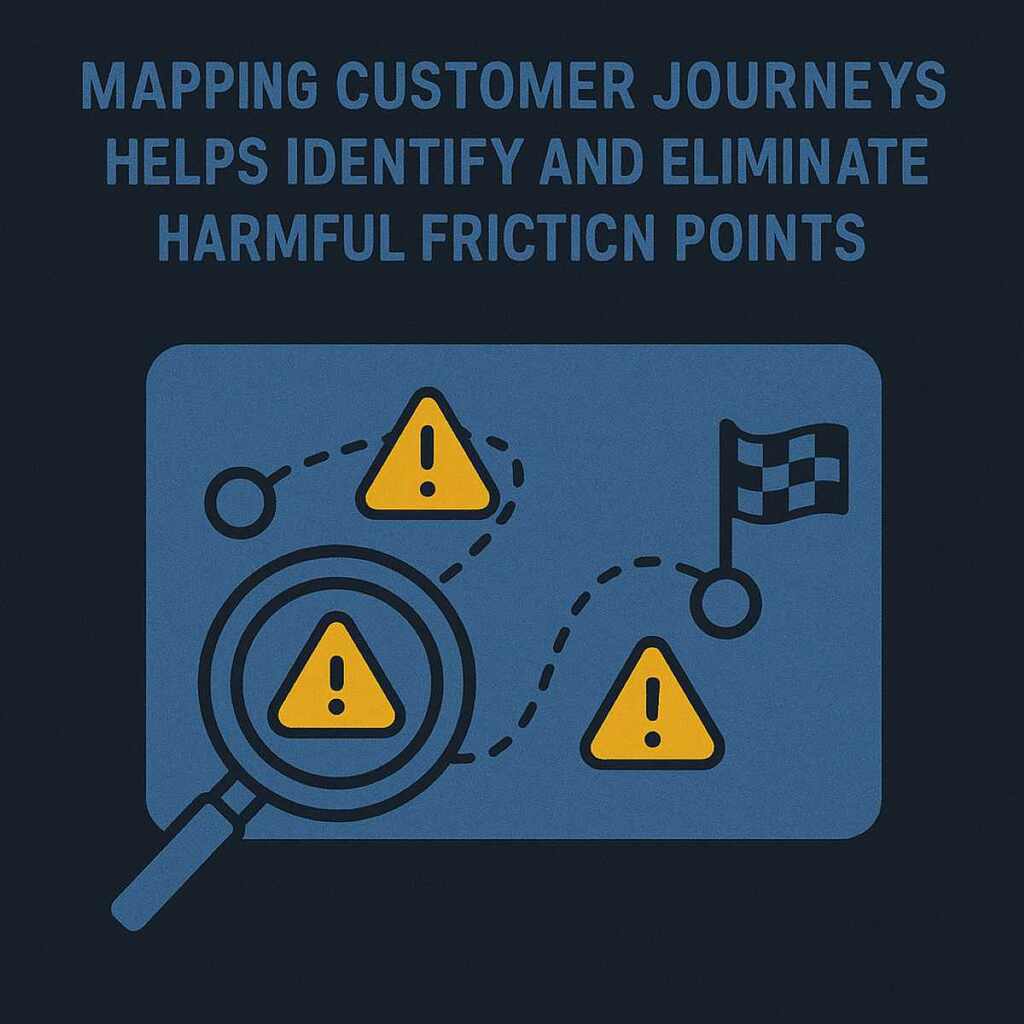
User Experience Design
Conduct friction audits of your digital products. Map user journeys and identify steps where users commonly abandon processes. Simplify forms, reduce required fields, and implement smart defaults to streamline interactions.
Sales Processes
Analyze your sales funnel for high-friction points. Implement one-click reordering for returning customers, offer transparent pricing, and create frictionless trial experiences that don’t require credit card information upfront.
Team Productivity
Identify and eliminate organizational friction. Reduce unnecessary meetings, streamline approval processes, and implement standardized templates and workflows for common tasks to minimize decision fatigue.
Friction and Trust in User Experience
Low-friction design builds trust. When users navigate smoothly, websites load quickly, and calls to action are clear, they’re more likely to engage. A 2021 Google study found that websites loading under 2 seconds had 50% higher engagement rates than slower ones.
Trust is lost when friction appears, like hidden fees or endless form fields. Ethical design aims to guide users, not trap them. Clear pathways help reduce bounce rates and build loyalty over time.
Implementation Strategy: The Friction Mental Model Audit
To systematically apply the friction mental model, conduct a “friction audit” using these steps:
- Identify the target behavior you want to encourage or discourage.
- Map the current process from intention to completion, noting every step.
- Highlight friction points where effort, time, or complexity might cause abandonment.
- Brainstorm ways to reduce or add friction strategically at each point.
- Implement changes one at a time to measure their impact.
- Continuously iterate based on results and feedback.
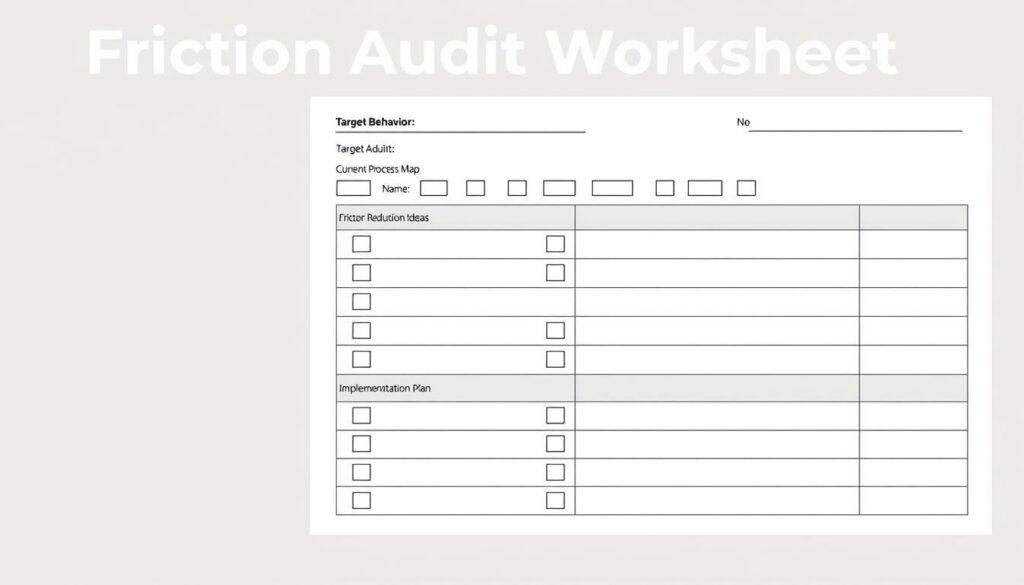
A friction audit worksheet helps systematically identify and address resistance points
Friction vs. Laziness: What’s the Real Problem?
When someone doesn’t follow through, we might think it’s laziness. But often, it’s really about friction. For instance, someone might want to eat healthy but avoids cooking because the ingredients are hard to find or cleaning up is too much work. That’s not laziness—it’s friction.
Understanding this difference helps you create systems that remove these invisible obstacles. Want to read more? Leave a book on your pillow. Want to spend less? Use apps that hide your balance. Changing your environment can often improve your behavior.
Ethical Considerations When Applying the Friction Mental Model

While the friction mental model is powerful, it comes with ethical responsibilities. Consider these principles when applying friction strategically:
Ethical Friction Design
- Reducing friction to help users achieve their genuine goals
- Adding friction to prevent harmful impulsive decisions
- Creating “mindful friction” that encourages reflection
- Being transparent about why certain friction exists
- Respecting user autonomy and providing options
Unethical Friction Design
- Creating “dark patterns” that trick users into unintended actions
- Making cancellation deliberately difficult while signup is easy
- Hiding important information behind multiple clicks
- Using friction to extract data or actions users wouldn’t normally provide
- Manipulating behavior in ways that primarily benefit the business
The most ethical approach is to align friction reduction with user goals and values. When users want to accomplish something that also benefits your business, reducing friction creates a win-win scenario. When friction is necessary for user protection, being transparent about its purpose builds trust.
Conclusion: Mastering the Friction Mental Model
The friction mental model shows us a simple truth: we tend to follow the easiest path. By cutting down on unnecessary obstacles and adding mindful friction where it’s needed, we can guide behavior. This way, we don’t need to rely on endless motivation or willpower.
Whether you’re improving your morning routine, redesigning an app, or leading a team, the rules are the same:
- Reduce friction for behaviors you want to encourage
- Add friction for behaviors you want to discourage
- Audit existing processes to identify unnecessary friction points
- Consider ethical implications when designing friction into systems
- Apply this model across personal habits, product design, and organizational systems
Apply the friction mental model to turn your intentions into actions. Do it consistently, efficiently, and ethically.
